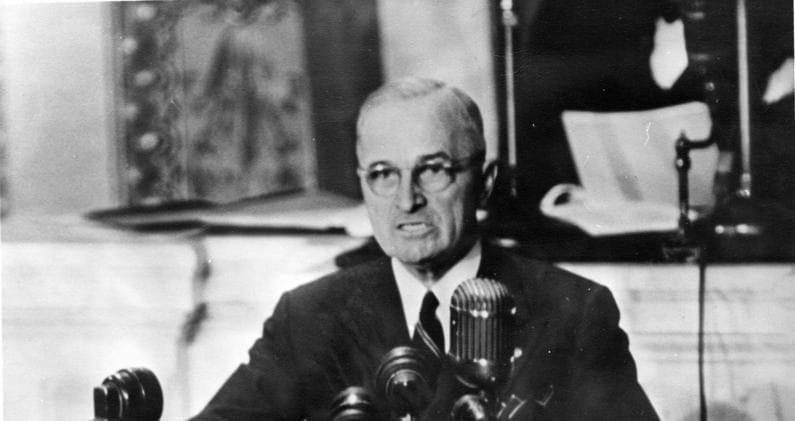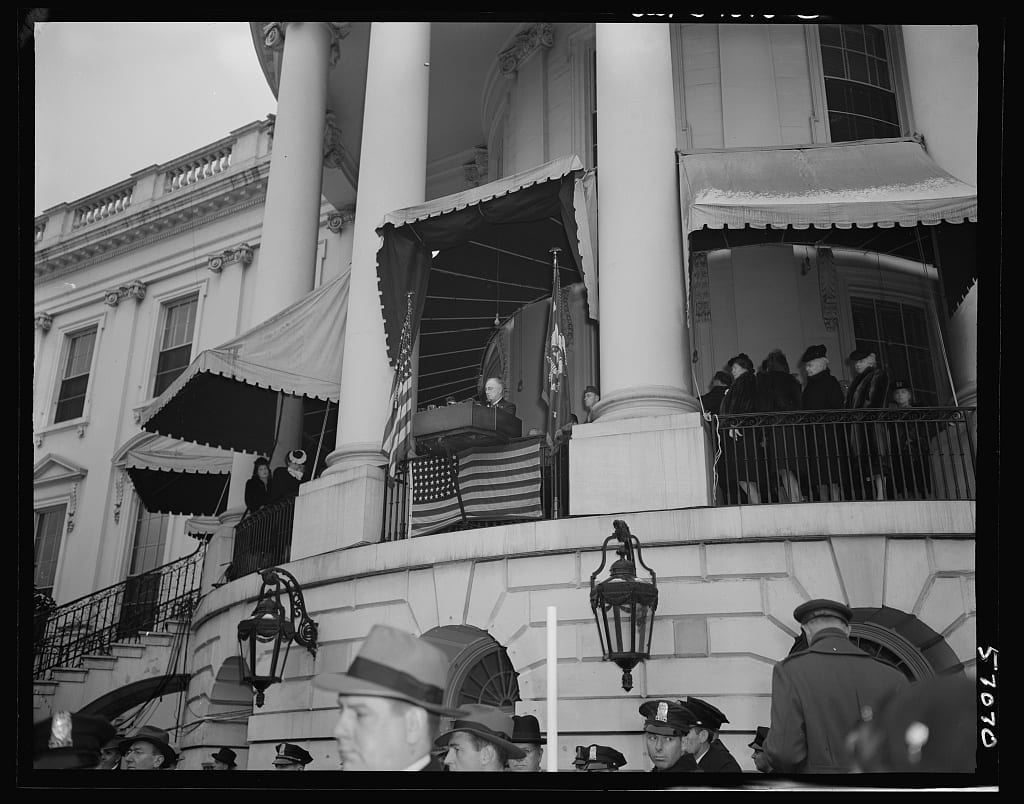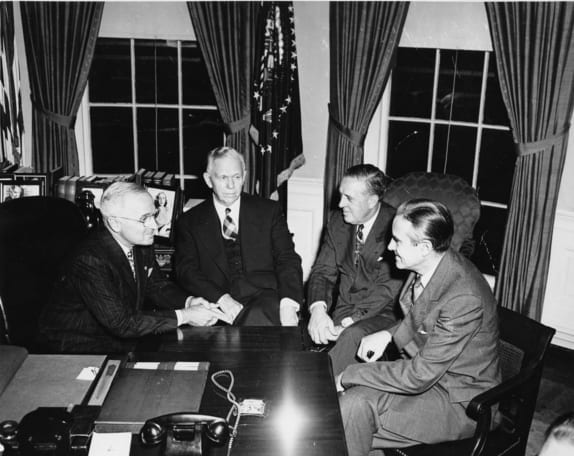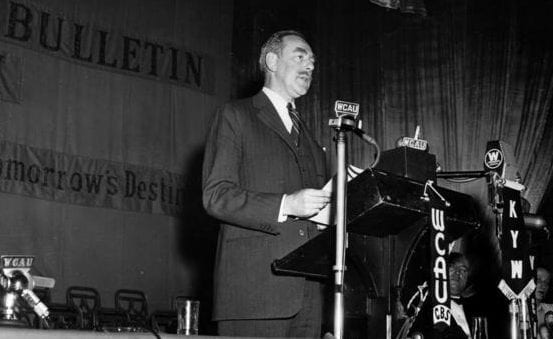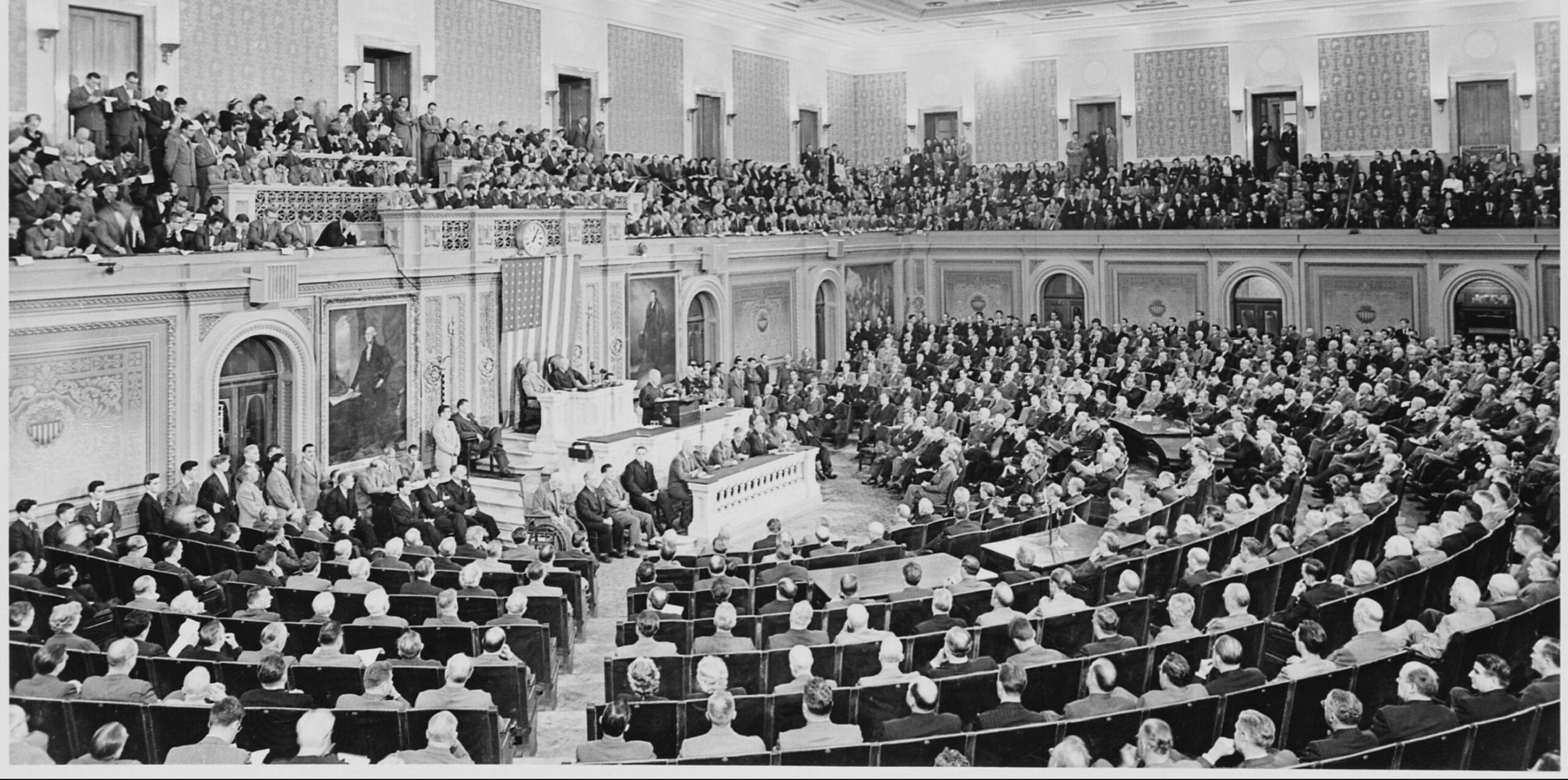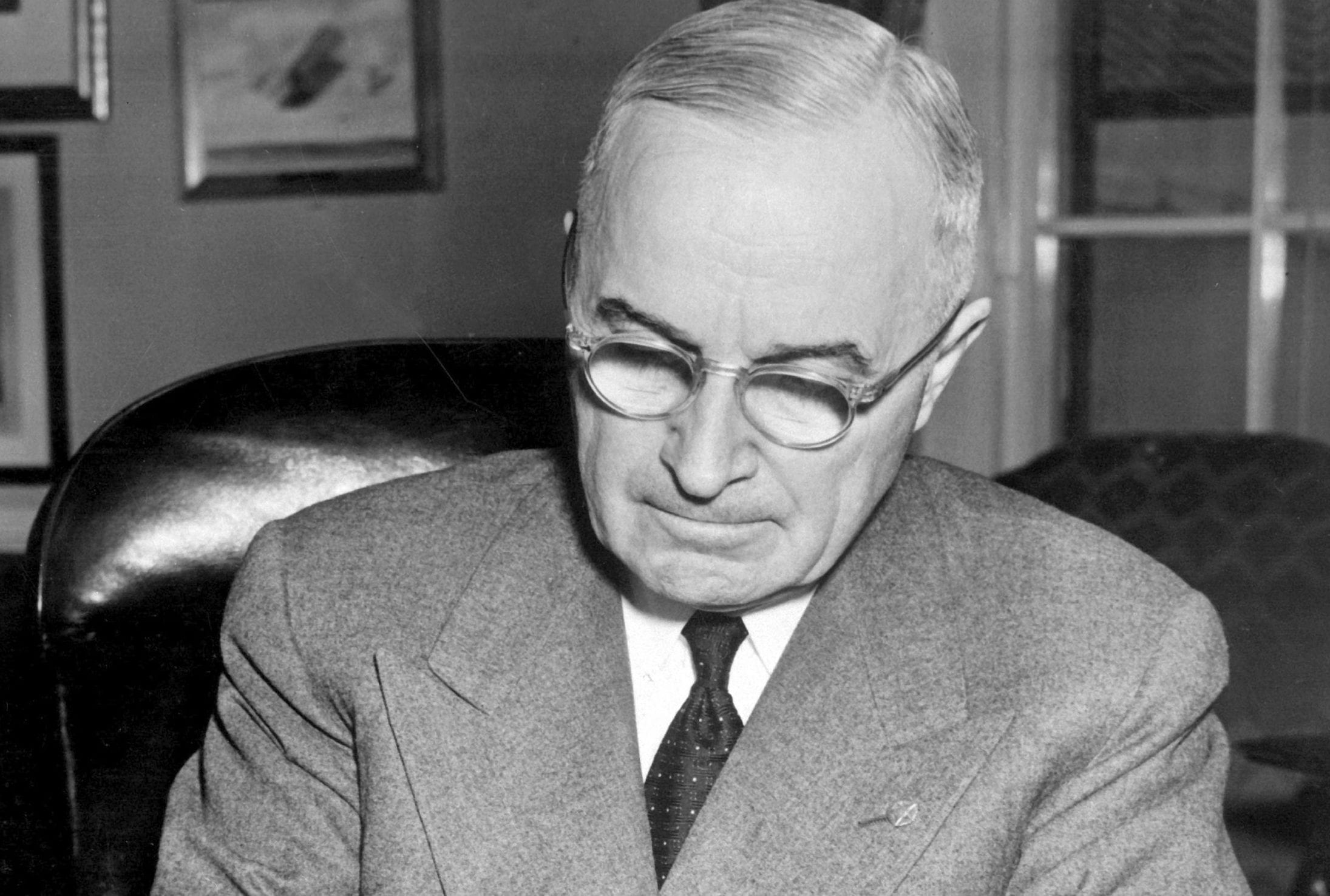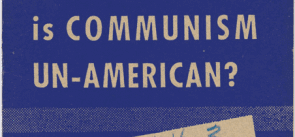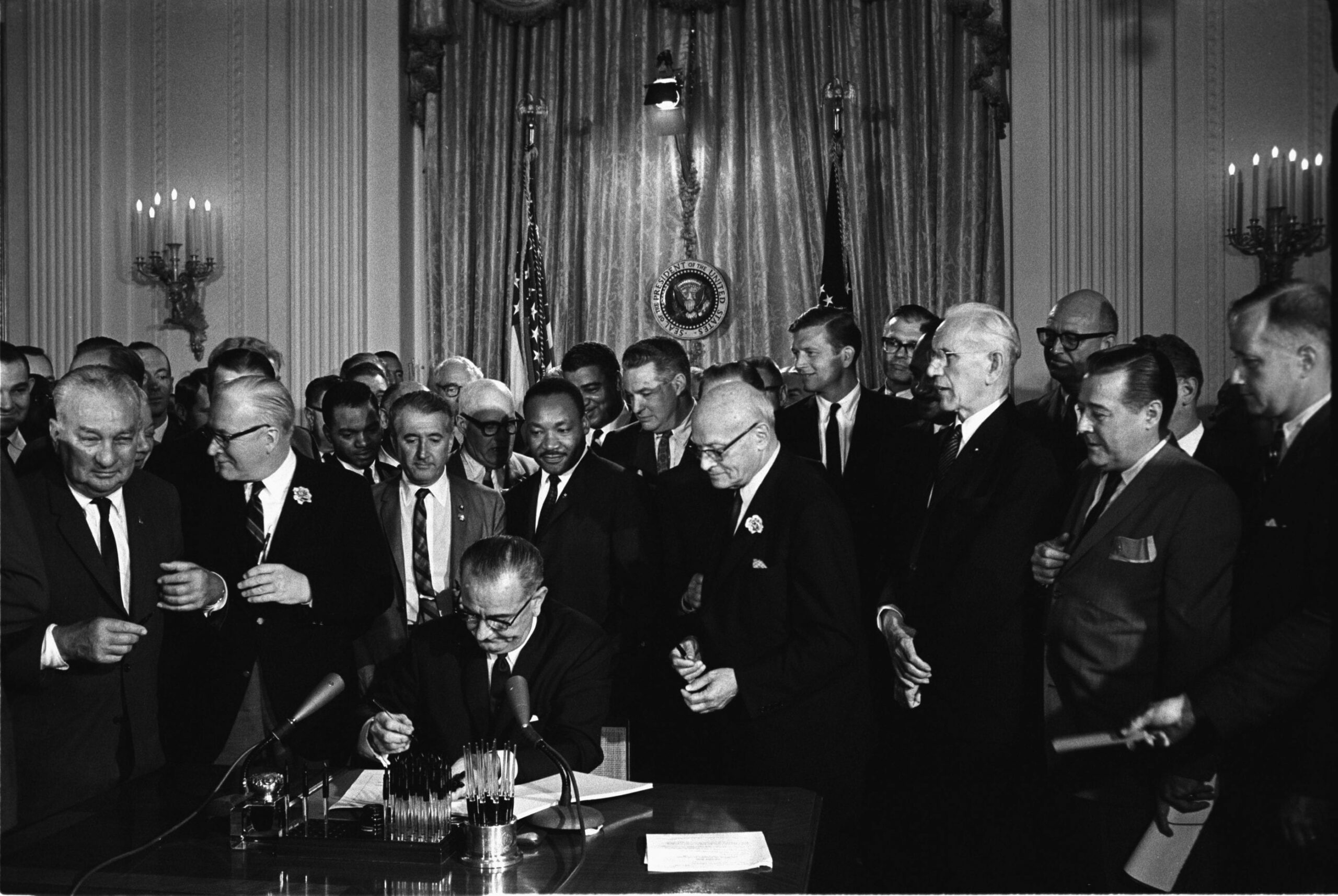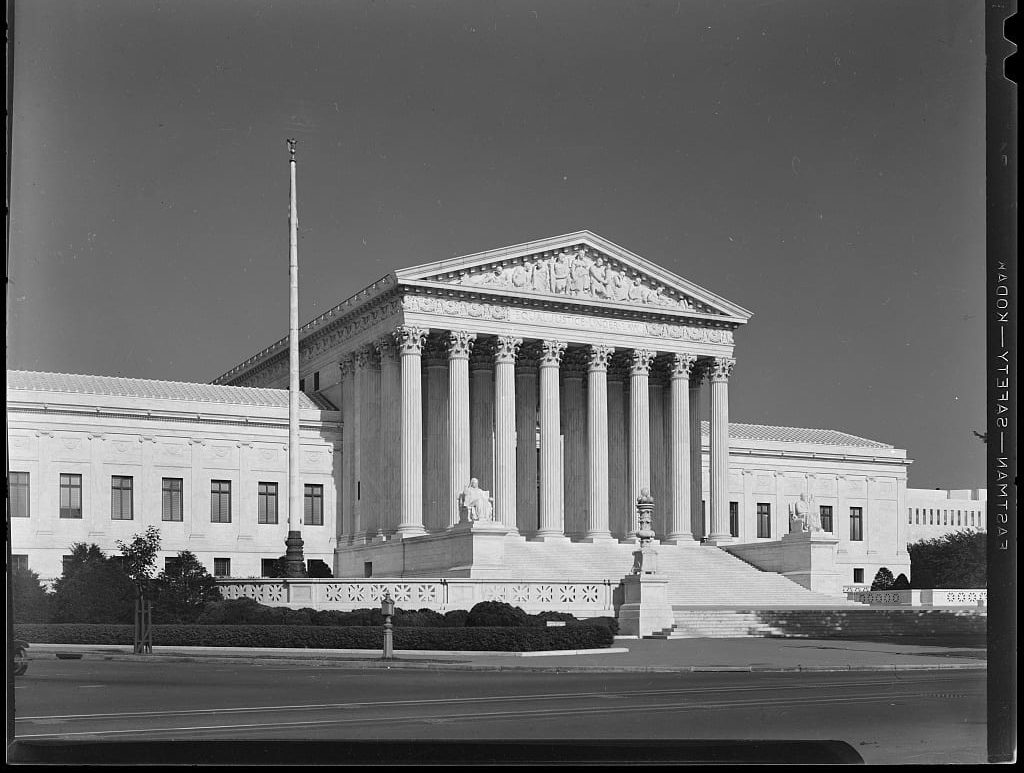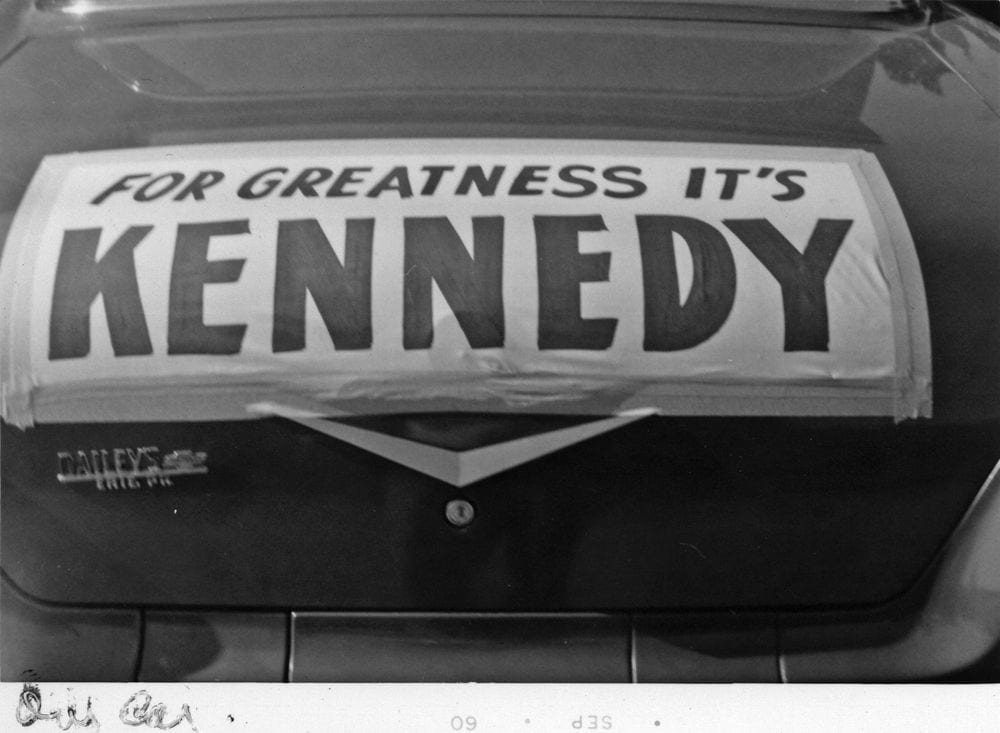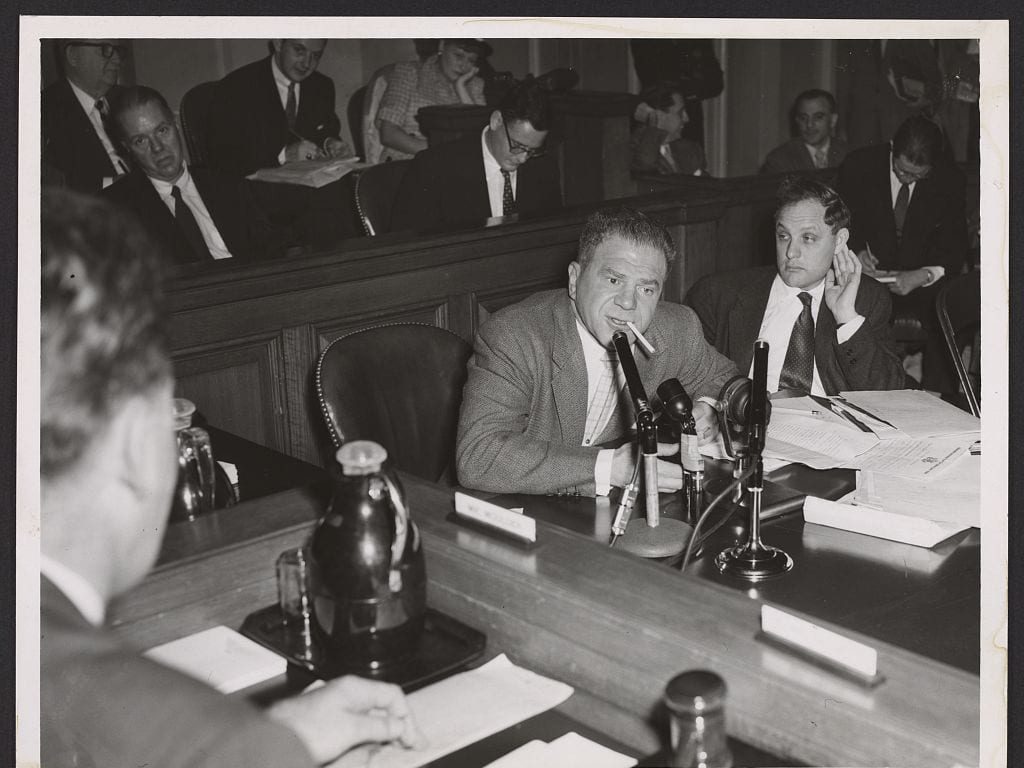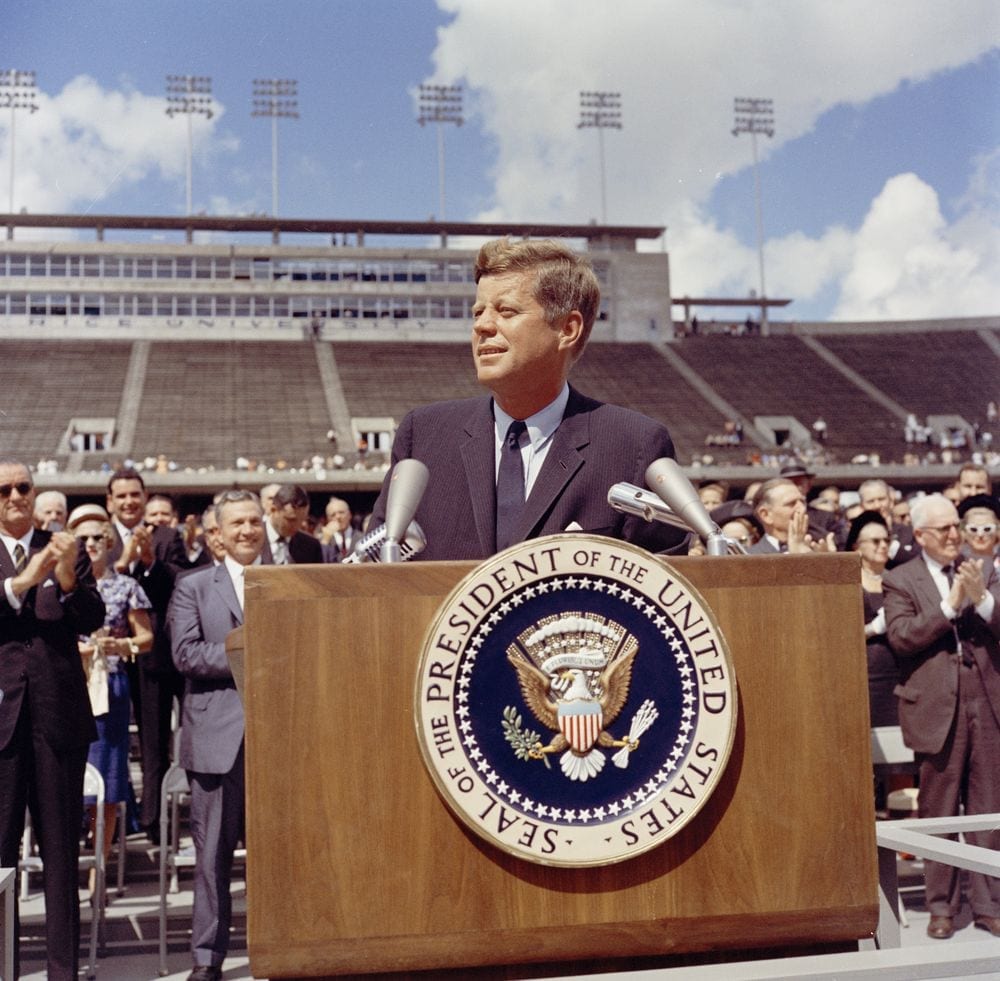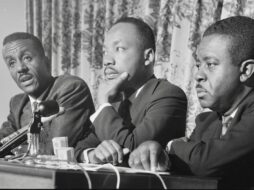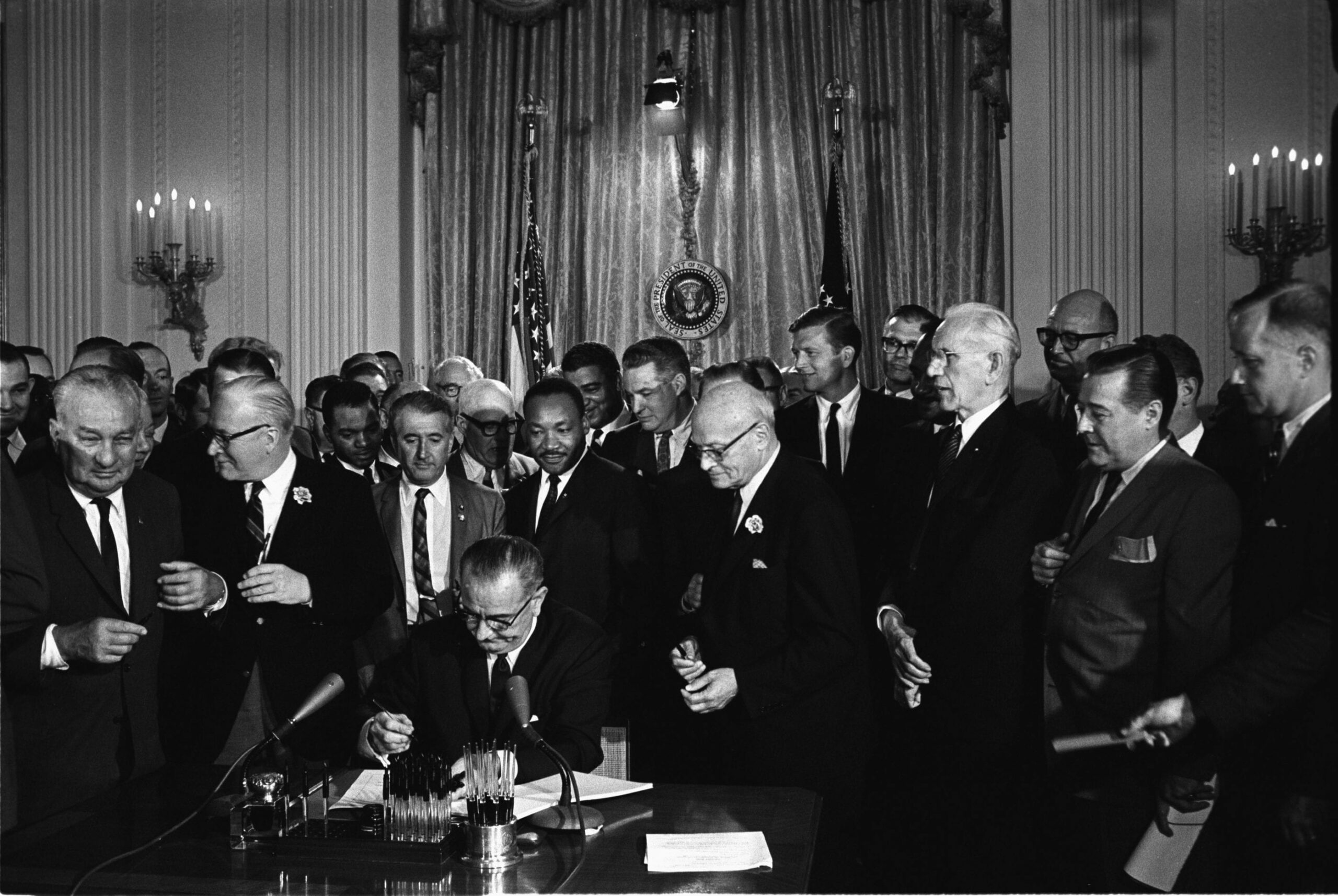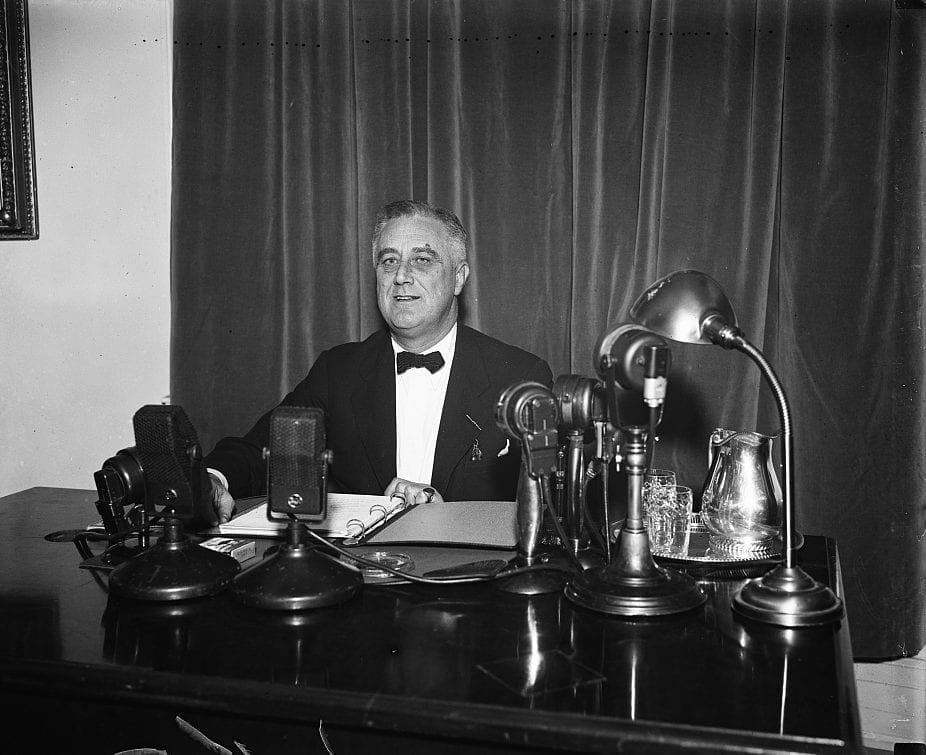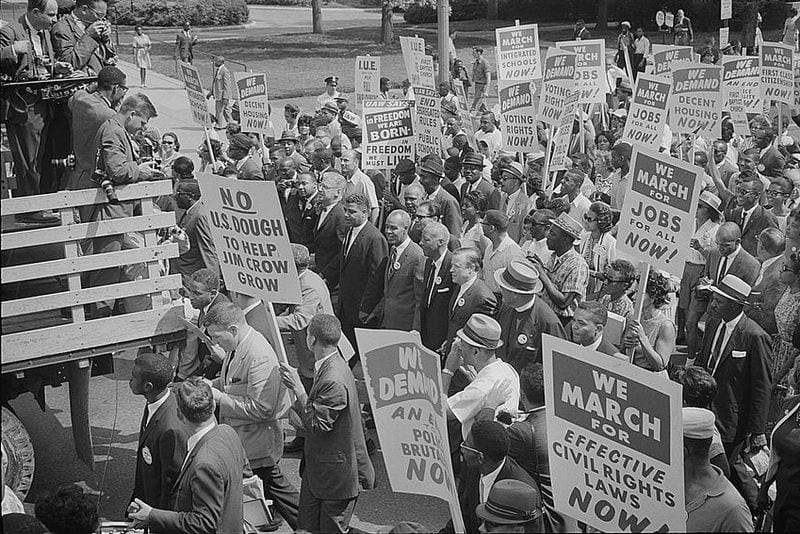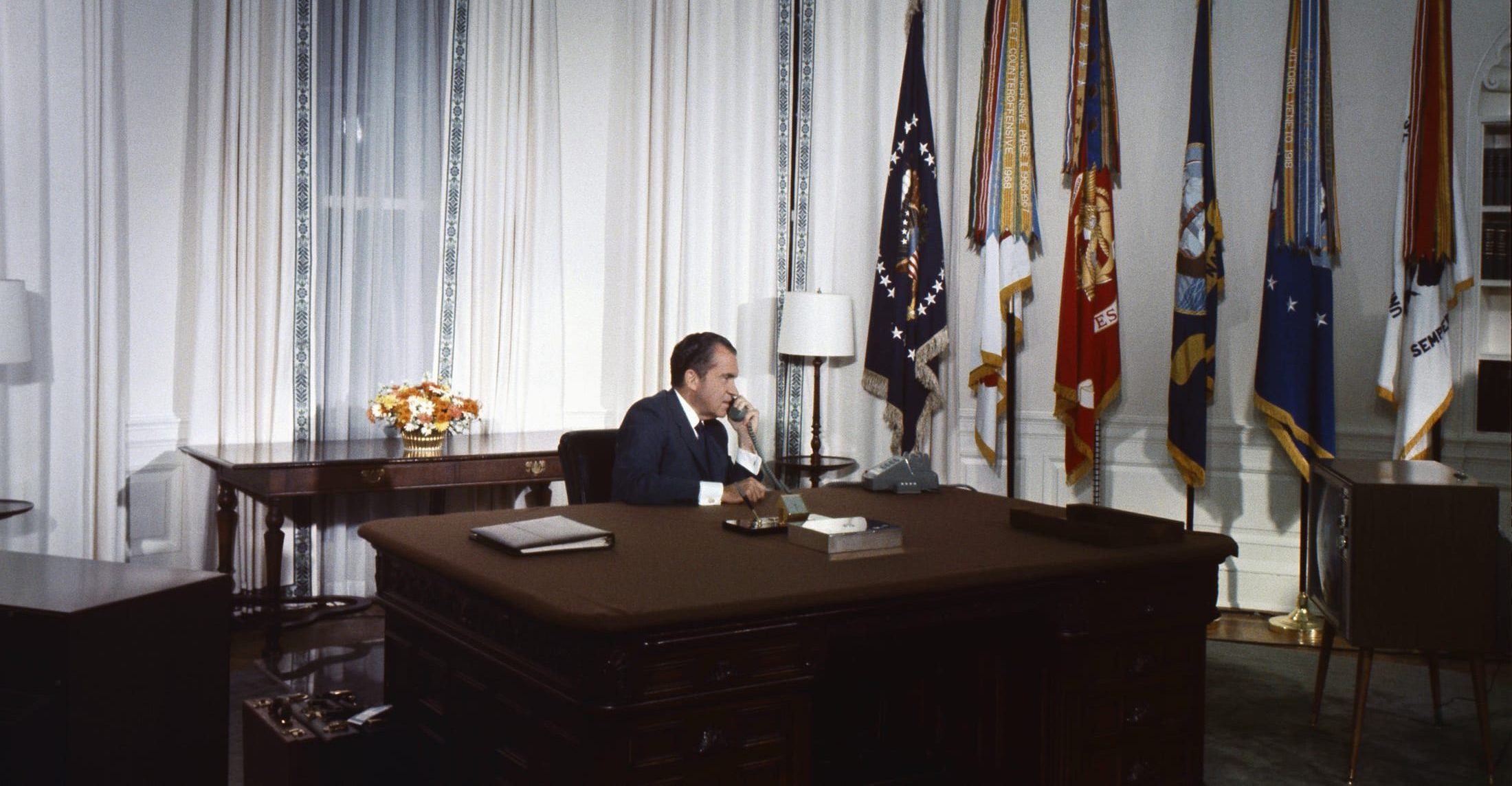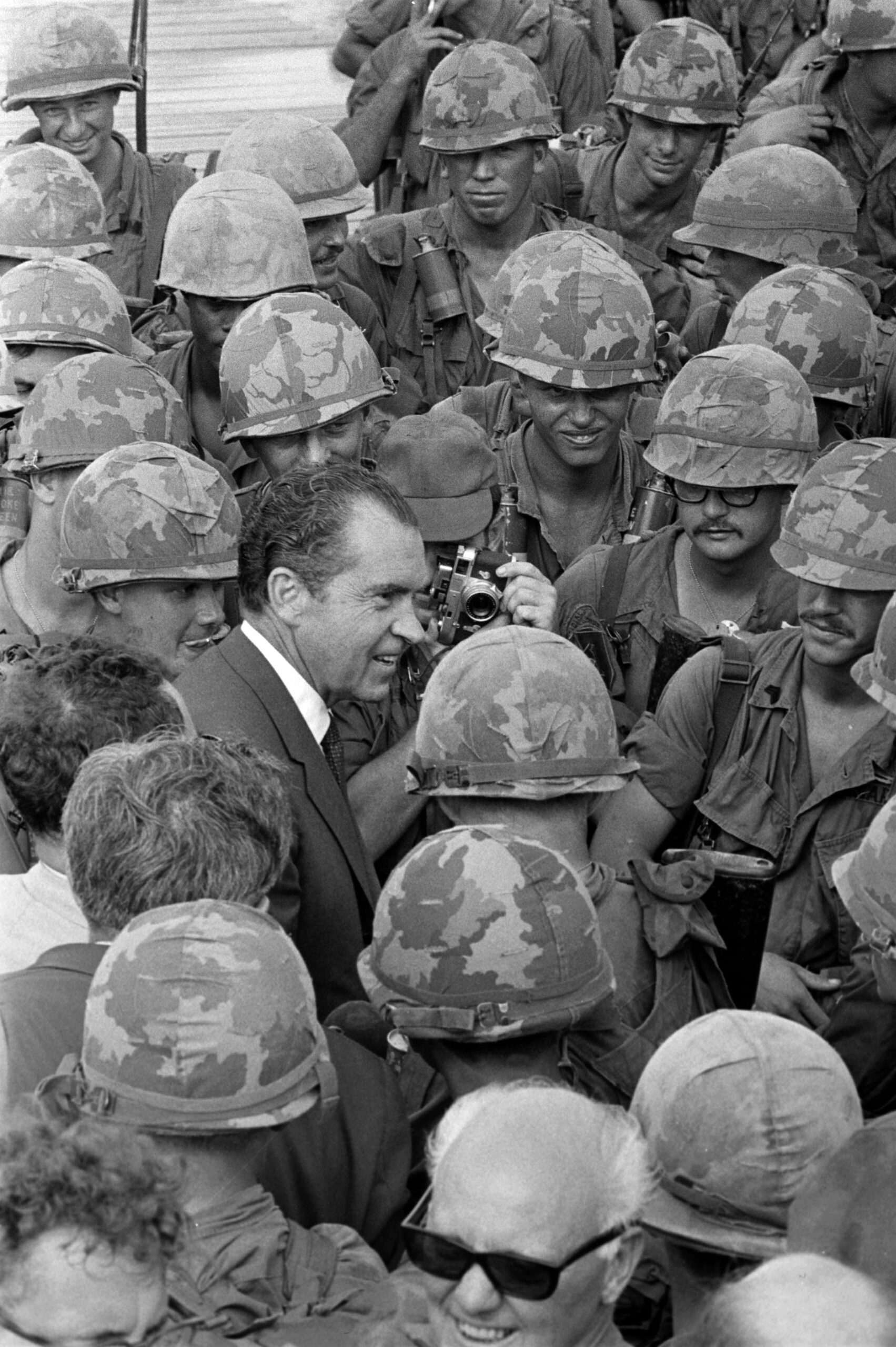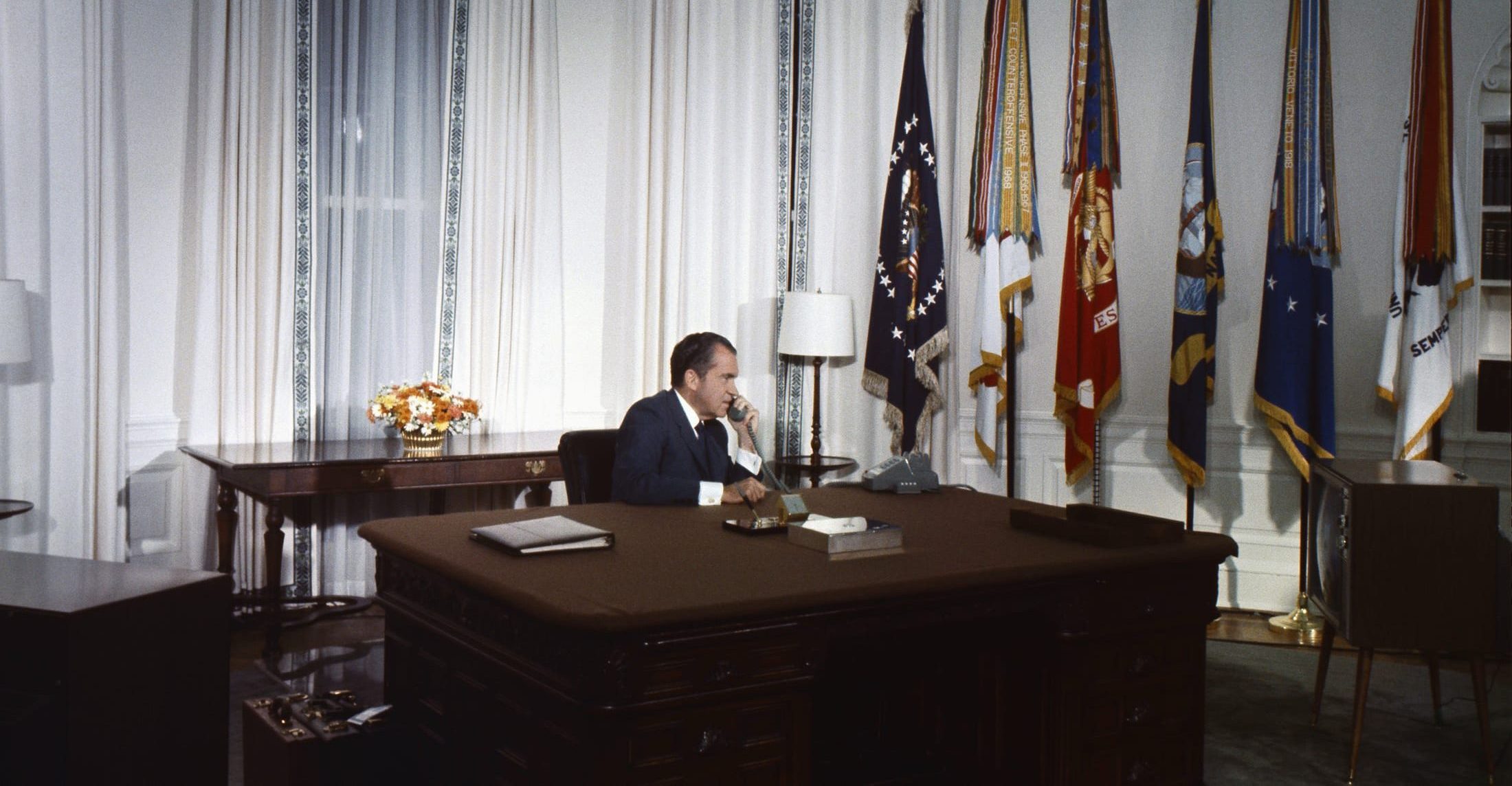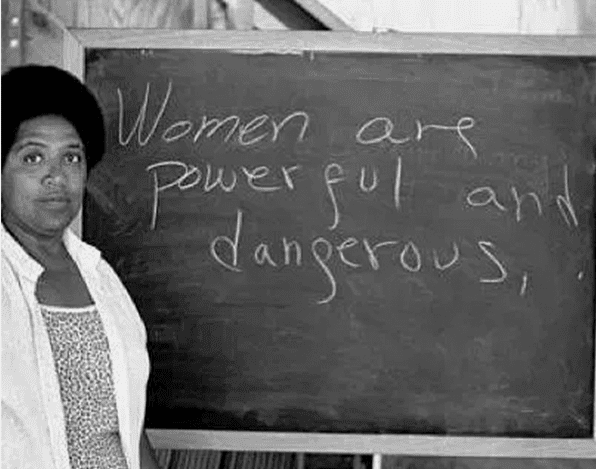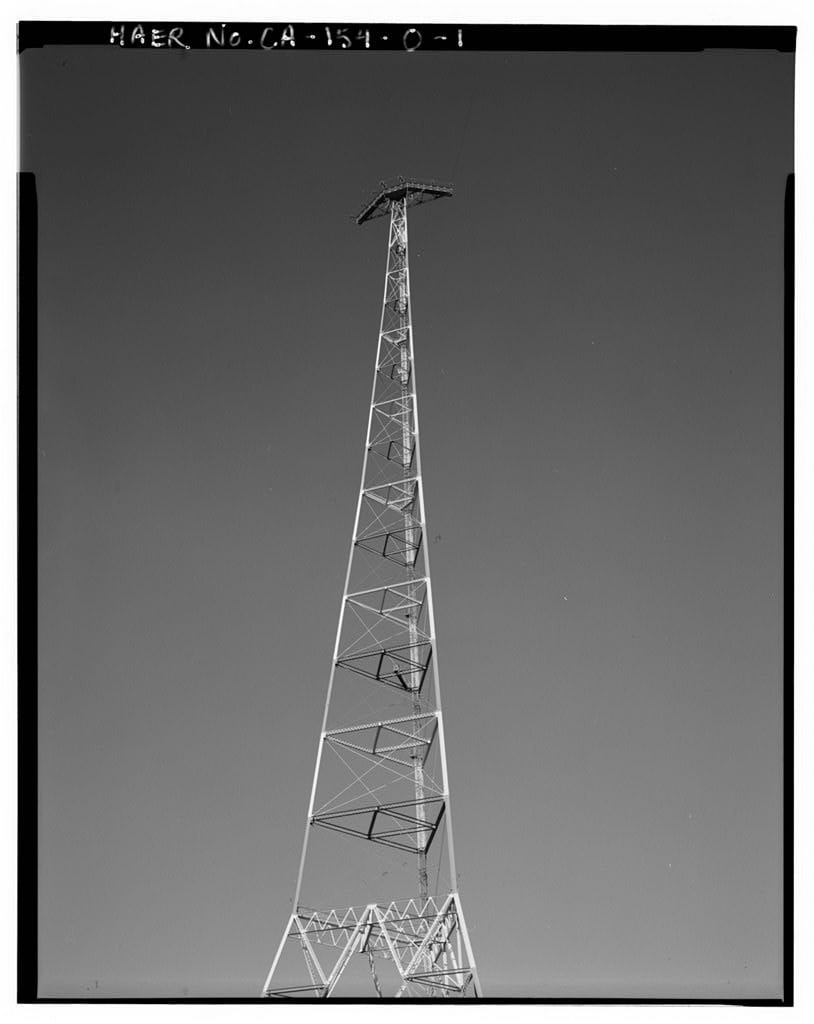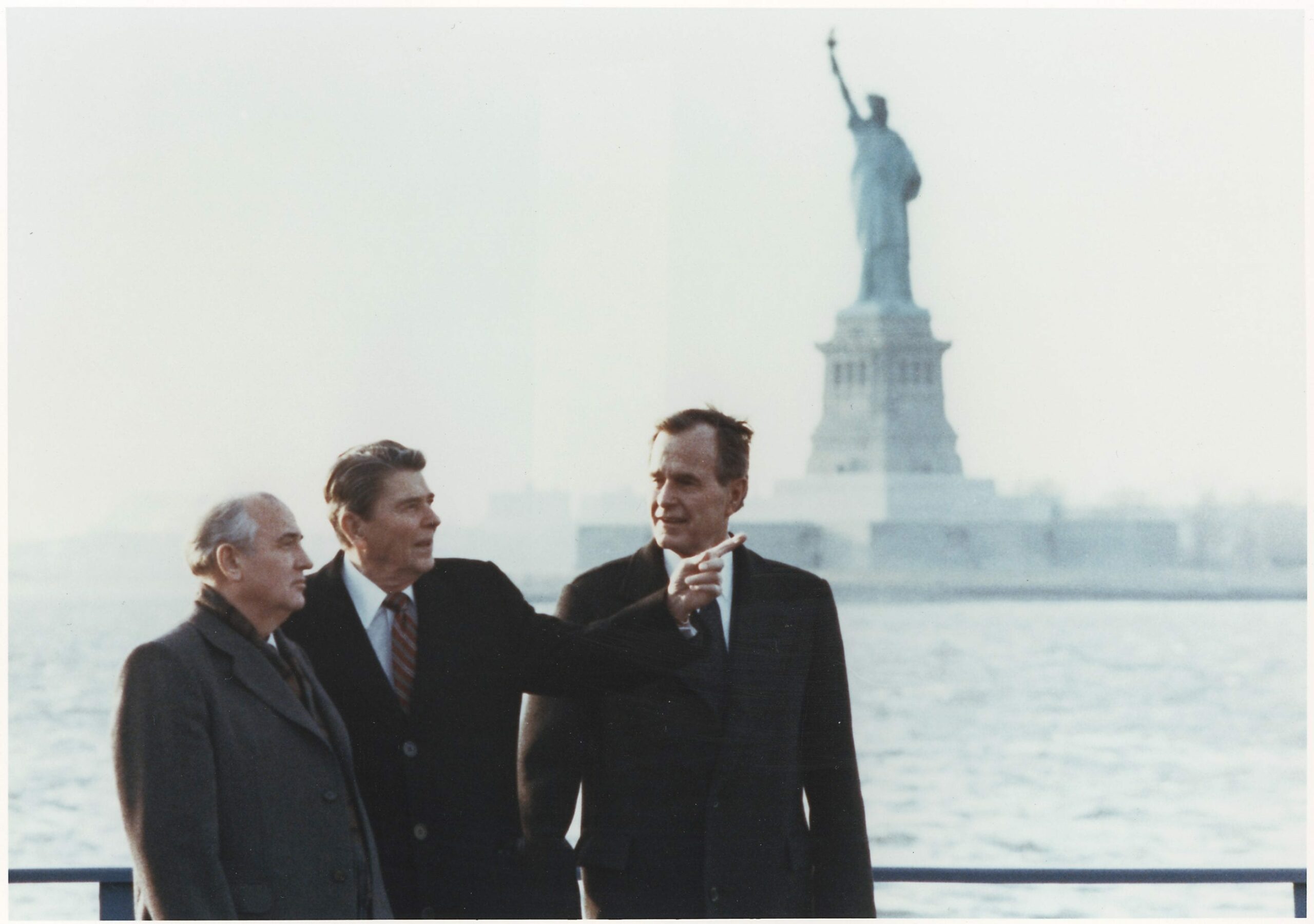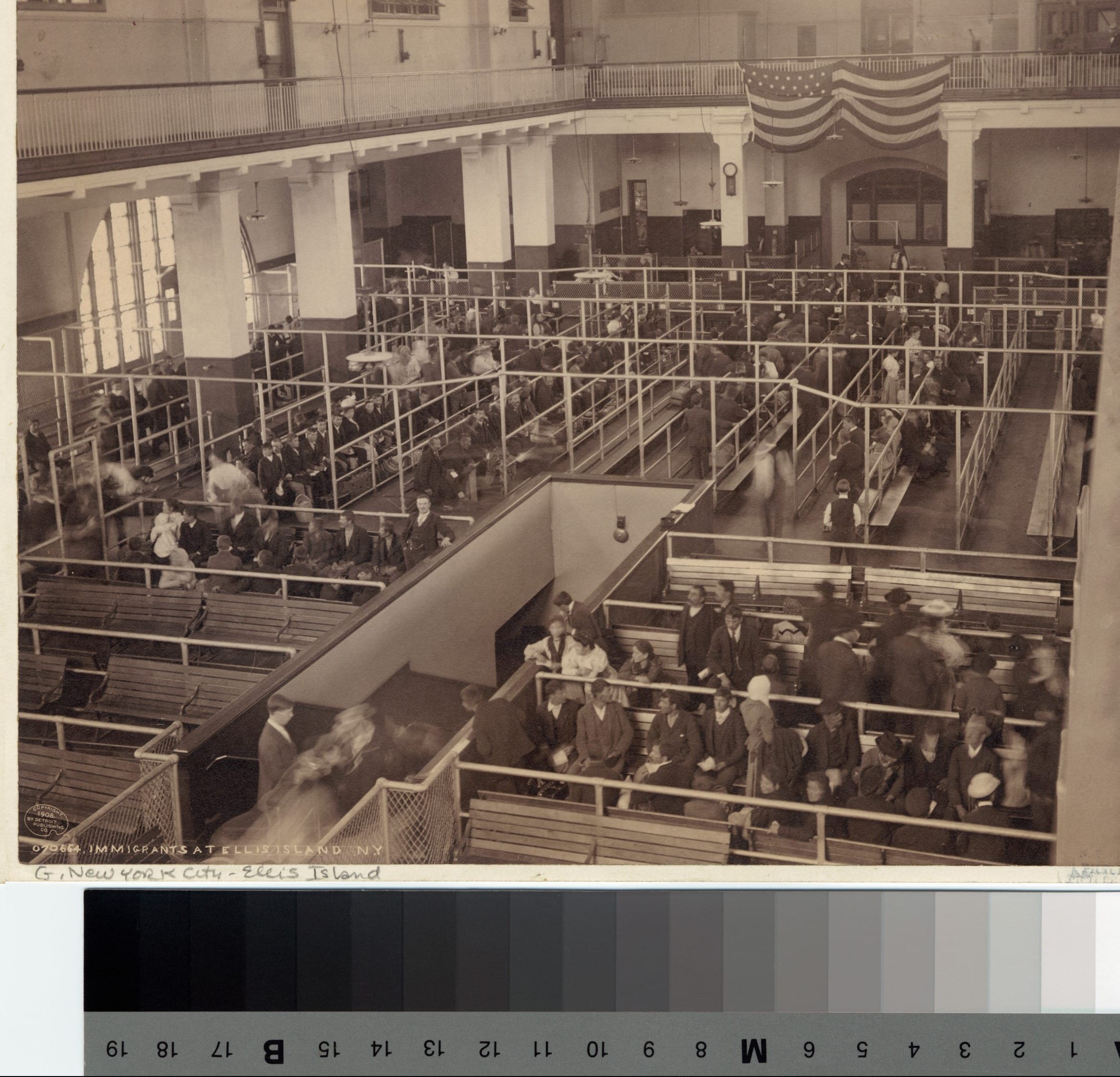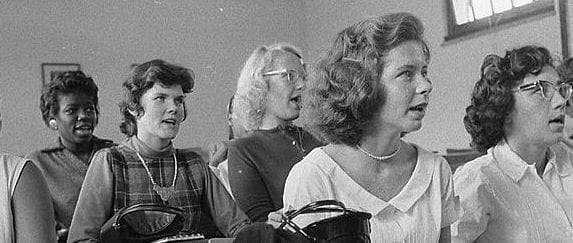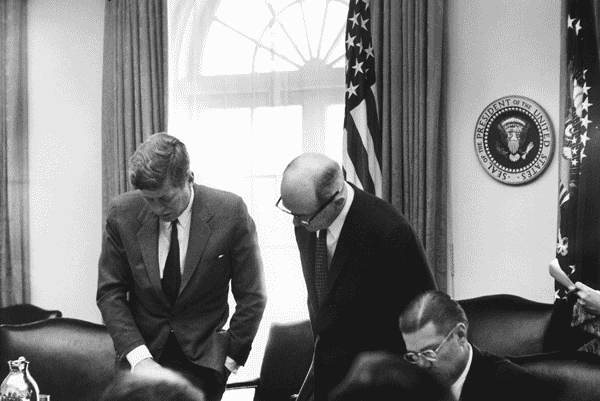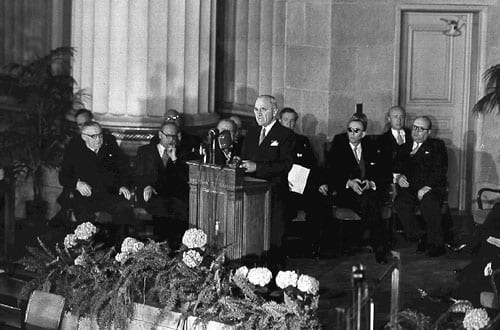

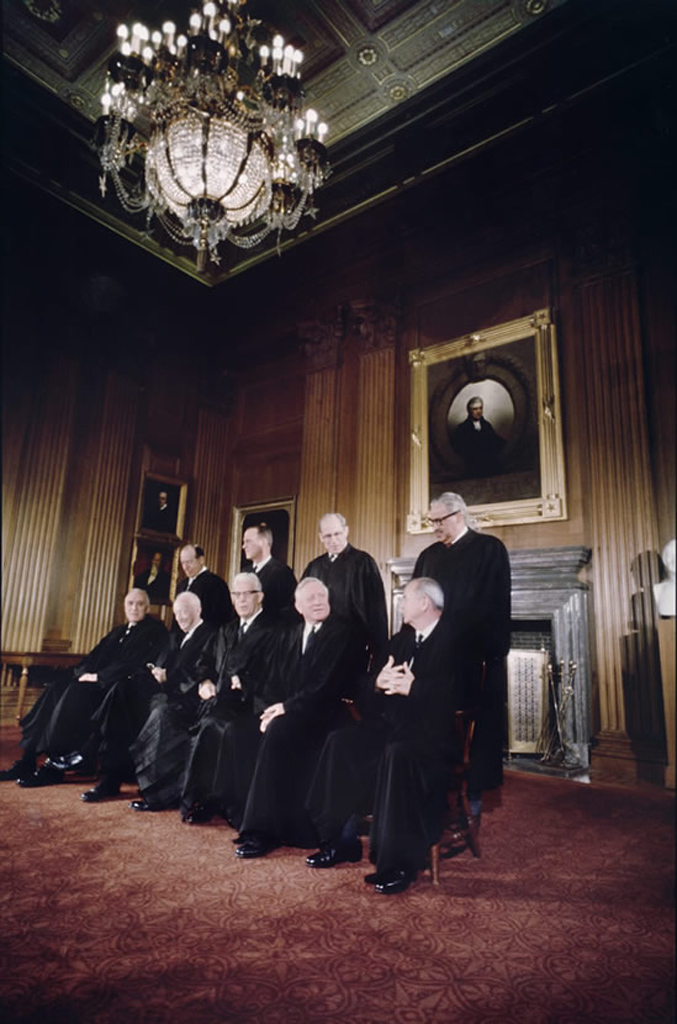
No related resources
Introduction
The Fourth Amendment protects the “right of the people to be secure in their persons, houses, papers, and effects against unreasonable searches and seizures.” As part of that protection, it also declares that “no Warrants shall issue, but upon probable cause, supported by Oath or affirmation, particularly describing the place to be searched, and the persons or things to be seized.” In Wolf v. Colorado (1949), the Supreme Court declared that Fourth Amendment protections apply through the Fourteenth Amendment against the states as well as the federal government. In addition, the Court has insisted that almost all police searches and seizures require a warrant issued by a neutral magistrate such as a judge unless there are “special” security needs or “exigent” circumstances.”
Until Katz v. US (1967), however, the Court generally had held that government does not conduct a “search” or “seizure” unless it physically trespasses on someone’s private property—for example, by entering their home or opening their closed briefcase without their consent. This was the “trespass doctrine” articulated by the Supreme Court in Olmstead v. US (1928). In Katz, however, the Court declared that government can conduct a search without trespassing on a person’s property if its actions violate the person’s reasonable expectation of privacy. In one of the most influential concurrences in modern Supreme Court history, Justice John Marshall Harlan II articulated a two-prong test for courts to use in determining whether someone has a reasonable expectation of privacy: 1. Did the person manifest a subjective expectation of privacy? and 2. Is society prepared to accept that expectation as objectively reasonable? Since 1967, the “reasonable expectation of privacy” test has become the basic constitutional guide for citizens, law enforcement officers, and courts in interpreting the Fourth Amendment. In more recent years, however, the Court declared—for example, in US v. Jones (2012)—that Katz had not actually eliminated the trespass doctrine but simply added “reasonable expectation of privacy” to it.
Source: 389 U.S. 347; https://www.law.cornell.edu/supremecourt/text/389/347#writing-ZS
Justice STEWART delivered the opinion of the Court, joined by Chief Justice WARREN and Justices DOUGLAS, HARLAN, BRENNAN, WHITE, and FORTAS.
[Katz] was convicted in the District Court for the Southern District of California . . . [for] transmitting wagering information by telephone from Los Angeles to Miami and Boston, in violation of a federal statute. At trial the Government was permitted . . . to introduce evidence of [Katz’s] end of telephone conversations, overheard by FBI agents who had attached an electronic listening and recording device to the outside of the public telephone booth from which he had placed his calls. In affirming his conviction, the Court of Appeals rejected the contention that the recordings had been obtained in violation of the Fourth Amendment, because “[t]here was no physical entrance into the area occupied by Katz.” . . .
[Katz] has phrased [the constitutional questions] as follows:
- Whether a public telephone booth is a constitutionally protected area so that evidence obtained by attaching an electronic listening recording device to the top of such a booth is obtained in violation of the right to privacy of the user of the booth.
- Whether physical penetration of a constitutionally protected area is necessary before a search and seizure can be said to be violative of the Fourth Amendment to the United States Constitution.
We decline to adopt this formulation of the issues. In the first place, the correct solution of Fourth Amendment problems is not necessarily promoted by incantation of the phrase “constitutionally protected area.” Secondly, the Fourth Amendment cannot be translated into a general constitutional “right to privacy.” That Amendment protects individual privacy against certain kinds of governmental intrusion, but its protections go further, and often have nothing to do with privacy at all. Other provisions of the Constitution protect personal privacy from other forms of governmental invasion. But the protection of a person’s general right to privacy—his right to be let alone by other people—is, like the protection of his property and of his very life, left largely to the law of the individual States.
Because of the misleading way the issues have been formulated, the parties have attached great significance to the characterization of the telephone booth from which the petitioner placed his calls. The petitioner has strenuously argued that the booth was a “constitutionally protected area.” The Government has maintained with equal vigor that it was not. But this effort to decide whether or not a given “area,” viewed in the abstract, is “constitutionally protected” deflects attention from the problem presented by this case. For the Fourth Amendment protects people, not places. What a person knowingly exposes to the public, even in his own home or office, is not a subject of Fourth Amendment protection. But what he seeks to preserve as private, even in an area accessible to the public, may be constitutionally protected.
The Government stresses the fact that the telephone booth from which [Katz] made his calls was constructed partly of glass, so that he was as visible after he entered it as he would have been if he had remained outside. But what he sought to exclude when he entered the booth was not the intruding eye—it was the uninvited ear. He did not shed his right to do so simply because he made his calls from a place where he might be seen. No less than an individual in a business office, in a friend’s apartment, or in a taxicab, a person in a telephone booth may rely upon the protection of the Fourth Amendment. One who occupies it, shuts the door behind him, and pays the toll that permits him to place a call is surely entitled to assume that the words he utters into the mouthpiece will not be broadcast to the world. To read the Constitution more narrowly is to ignore the vital role that the public telephone has come to play in private communication.
The Government contends, however, that the activities of its agents in this case should not be tested by Fourth Amendment requirements, for the surveillance technique they employed involved no physical penetration of the telephone booth from which the petitioner placed his calls. It is true that the absence of such penetration was at one time thought to foreclose further Fourth Amendment inquiry (Olmstead v. United States [1928]) for that Amendment was thought to limit only searches and seizures of tangible property. But “[t]he premise that property interests control the right of the Government to search and seize has been discredited.” Thus, although a closely divided Court supposed in Olmstead that surveillance without any trespass and without the seizure of any material object fell outside the ambit of the Constitution, we have since departed from the narrow view on which that decision rested. Indeed, we have expressly held that the Fourth Amendment governs not only the seizure of tangible items, but extends as well to the recording of oral statements, overheard without any “technical trespass under . . . local property law” (Silverman v. United States [1961]). Once this much is acknowledged, and once it is recognized that the Fourth Amendment protects people—and not simply “areas”—against unreasonable searches and seizures, it becomes clear that the reach of that Amendment cannot turn upon the presence or absence of a physical intrusion into any given enclosure.
We conclude that the underpinnings of Olmstead . . . have been so eroded by our subsequent decisions that the “trespass” doctrine there enunciated can no longer be regarded as controlling. The Government’s activities in electronically listening to and recording the petitioner’s words violated the privacy upon which he justifiably relied while using the telephone booth, and thus constituted a “search and seizure” within the meaning of the Fourth Amendment. The fact that the electronic device employed to achieve that end did not happen to penetrate the wall of the booth can have no constitutional significance.
The question remaining for decision, then, is whether the search and seizure conducted in this case complied with constitutional standards. In that regard, the Government’s position is that its agents acted in an entirely defensible manner: they did not begin their electronic surveillance until investigation of the petitioner’s activities had established a strong probability that he was using the telephone in question to transmit gambling information to persons in other States, in violation of federal law. Moreover, the surveillance was limited, both in scope and in duration, to the specific purpose of establishing the contents of the petitioner’s unlawful telephonic communications. The agents confined their surveillance to the brief periods during which he used the telephone booth, and they took great care to overhear only the conversations of [Katz] himself.
Accepting this account of the Government’s actions as accurate, it is clear that this surveillance was so narrowly circumscribed that a duly authorized magistrate, properly notified of the need for such investigation, specifically informed of the basis on which it was to proceed, and clearly apprised of the precise intrusion it would entail, could constitutionally have authorized, with appropriate safeguards, the very limited search and seizure that the Government asserts in fact took place. . . .
The Government urges that, because its agents relied upon . . . Olmstead, . . . and because they did no more here than they might properly have done with prior judicial sanction, we should retroactively validate their conduct. That we cannot do. It is apparent that the agents, in this case, acted with restraint. Yet the inescapable fact is that this restraint was imposed by the agents themselves, not by a judicial officer. They were not required, before commencing the search, to present their estimate of probable cause for detached scrutiny by a neutral magistrate. They were not compelled, during the conduct of the search itself, to observe precise limits established in advance by a specific court order. Nor were they directed, after the search had been completed, to notify the authorizing magistrate in detail of all that had been seized. In the absence of such safeguards, this Court has never sustained a search upon the sole ground that officers reasonably expected to find evidence of a particular crime and voluntarily confined their activities to the least intrusive means consistent with that end. Searches conducted without warrants have been held unlawful . . . , subject only to a few specifically established and well-delineated exceptions. . . .
The Government does not question these basic principles. Rather, it urges the creation of a new exception to cover this case. It argues that surveillance of a telephone booth should be exempted from the usual requirement of advance authorization by a magistrate upon a showing of probable cause. We cannot agree. . . .[B]ypassing a neutral predetermination of the scope of a search leaves individuals secure from Fourth Amendment violations “only in the discretion of the police.”
These considerations do not vanish when the search in question is transferred from the setting of a home, an office, or a hotel room to that of a telephone booth. Wherever a man may be, he is entitled to know that he will remain free from unreasonable searches and seizures. The government agents here ignored “the procedure of antecedent justification . . . that is central to the Fourth Amendment,”[1] a procedure that we hold to be a constitutional precondition of the kind of electronic surveillance involved in this case. Because the surveillance here failed to meet that condition, and because it led to the petitioner’s conviction, the judgment must be reversed.
It is so ordered.
Justice MARSHALL took no part in the consideration or decision of this case.
Justice HARLAN, concurring.
. . . As the Court’s opinion states, “the Fourth Amendment protects people, not places.” The question, however, is what protection it affords to those people. Generally, as here, the answer to that question requires reference to a “place.” My understanding of the rule that has emerged from prior decisions is that there is a twofold requirement, first that a person have exhibited an actual (subjective) expectation of privacy and, second, that the expectation be one that society is prepared to recognize as “reasonable.” Thus, a man’s home is, for most purposes, a place where he expects privacy, but objects, activities, or statements that he exposes to the “plain view” of outsiders are not “protected” because no intention to keep them to himself has been exhibited. On the other hand, conversations in the open would not be protected against being overheard, for the expectation of privacy under the circumstances would be unreasonable.
The critical fact in this case is that “[o]ne who occupies it, [a telephone booth] shuts the door behind him, and pays the toll that permits him to place a call is surely entitled to assume” that his conversation is not being intercepted. The point is not that the booth is “accessible to the public” at other times, but that it is a temporarily private place whose momentary occupants’ expectations of freedom from intrusion are recognized as reasonable. . . .
Finally, I do not read the Court’s opinion to declare that no interception of a conversation one-half of which occurs in a public telephone booth can be reasonable in the absence of a warrant. As elsewhere under the Fourth Amendment, warrants are the general rule, to which the legitimate needs of law enforcement may demand specific exceptions. It will be time enough to consider any such exceptions when an appropriate occasion presents itself, and I agree with the Court that this is not one.
Justice BLACK, dissenting.
If I could agree with the Court that eavesdropping carried on by electronic means (equivalent to wiretapping) constitutes a “search” or “seizure,” I would be happy to join the Court’s opinion. . . .
My basic objection is two-fold: (1) I do not believe that the words of the Amendment will bear the meaning given them by today’s decision, and (2) I do not believe that it is the proper role of this Court to rewrite the Amendment in order “to bring it into harmony with the times,” and thus reach a result that many people believe to be desirable.
While I realize that an argument based on the meaning of words lacks the scope, and no doubt the appeal, of broad policy discussions and philosophical discourses on such nebulous subjects as privacy, for me, the language of the Amendment is the crucial place to look in construing a written document such as our Constitution. The Fourth Amendment says that
“[t]he right of the people to be secure in their persons, houses, papers, and effects, against unreasonable searches and seizures, shall not be violated, and no Warrants shall issue, but upon probable cause, supported by Oath or affirmation, and particularly describing the place to be searched, and the persons or things to be seized.”
The first clause protects “persons, houses, papers, and effects against unreasonable searches and seizures. . . .” These words connote the idea of tangible things with size, form, and weight, things capable of being searched, seized, or both. The second clause of the Amendment still further establishes its Framers’ purpose to limit its protection to tangible things by providing that no warrants shall issue but those “particularly describing the place to be searched, and the persons or things to be seized.” A conversation overheard by eavesdropping, whether by plain snooping or wiretapping, is not tangible and, under the normally accepted meanings of the words, can neither be searched nor seized. In addition the language of the second clause indicates that the Amendment refers not only to something tangible so it can be seized, but to something already in existence, so it can be described. Yet the Court’s interpretation would have the Amendment apply to overhearing future conversations, which, by their very nature, are nonexistent until they take place. How can one “describe” a future conversation, and, if one cannot, how can a magistrate issue a warrant to eavesdrop one in the future? It is argued that information showing what is expected to be said is sufficient to limit the boundaries of what later can be admitted into evidence; but does such general information really meet the specific language of the Amendment which says “particularly describing”? Rather than using language in a completely artificial way, I must conclude that the Fourth Amendment simply does not apply to eavesdropping.
Tapping telephone wires, of course, was an unknown possibility at the time the Fourth Amendment was adopted. But eavesdropping (and wiretapping is nothing more than eavesdropping by telephone) was . . . recognized, “an ancient practice which, at common law, was condemned as a nuisance. Blackstone, Commentaries.” . . . There can be no doubt that the Framers were aware of this practice, and, if they had desired to outlaw or restrict the use of evidence obtained by eavesdropping, I believe that they would have used the appropriate language to do so in the Fourth Amendment. They certainly would not have left such a task to the ingenuity of language-stretching judges. No one, it seems to me, can read the debates on the Bill of Rights without reaching the conclusion that its Framers and critics well knew the meaning of the words they used, what they would be understood to mean by others, their scope and their limitations. Under these circumstances, it strikes me as a charge against their scholarship, their common sense and their candor to give to the Fourth Amendment’s language the eavesdropping meaning the Court imputes to it today.
I do not deny that common sense requires, and that this Court often has said, that the Bill of Rights’ safeguards should be given a liberal construction. This principle, however, does not justify construing the search and seizure amendment as applying to eavesdropping or the “seizure” of conversations. The Fourth Amendment was aimed directly at the abhorred practice of breaking in, ransacking and searching homes and other buildings and seizing people’s personal belongings without warrants issued by magistrates. The Amendment deserves, and this Court has given it, a liberal construction in order to protect against warrantless searches of buildings and seizures of tangible personal effects. But, until today, this Court has refused to say that eavesdropping comes within the ambit of Fourth Amendment restrictions. . . .
Since I see no way in which the words of the Fourth Amendment can be construed to apply to eavesdropping, that closes the matter for me. In interpreting the Bill of Rights, I willingly go as far as a liberal construction of the language takes me, but I simply cannot in good conscience give a meaning to words which they have never before been thought to have and which they certainly do not have in common ordinary usage. I will not distort the words of the Amendment in order to “keep the Constitution up to date” or “to bring it into harmony with the times.” It was never meant that this Court have such power, which, in effect, would make us a continuously functioning constitutional convention. . . .
The Fourth Amendment protects privacy only to the extent that it prohibits unreasonable searches and seizures of “persons, houses, papers, and effects.” No general right is created by the Amendment so as to give this Court the unlimited power to hold unconstitutional everything which affects privacy. Certainly the Framers, well acquainted as they were with the excesses of governmental power, did not intend to grant this Court such omnipotent lawmaking authority as that. The history of governments proves that it is dangerous to freedom to repose such powers in courts.
For these reasons I respectfully dissent.
- 1. Justice Stewart’s footnote: “See Osborn v. United States, 385 US 323, 330.”

Conversation-based seminars for collegial PD, one-day and multi-day seminars, graduate credit seminars (MA degree), online and in-person.








